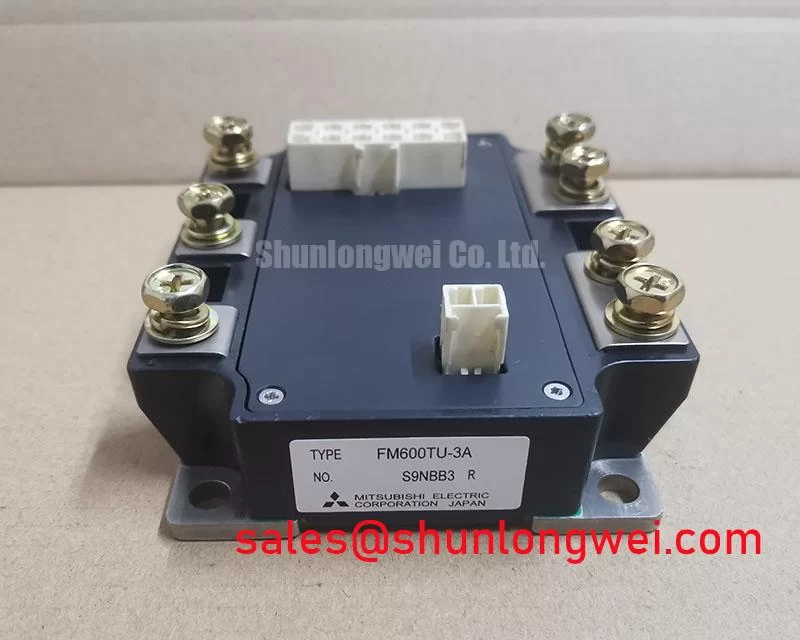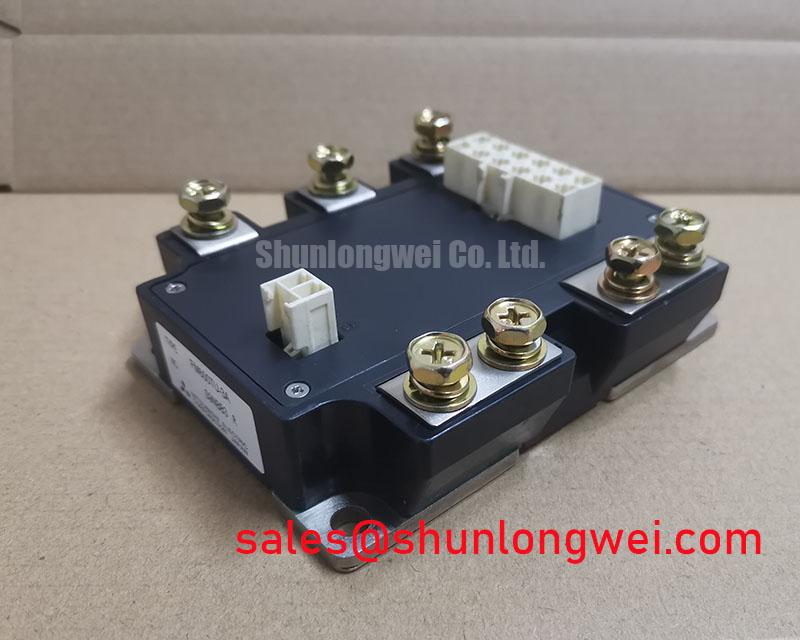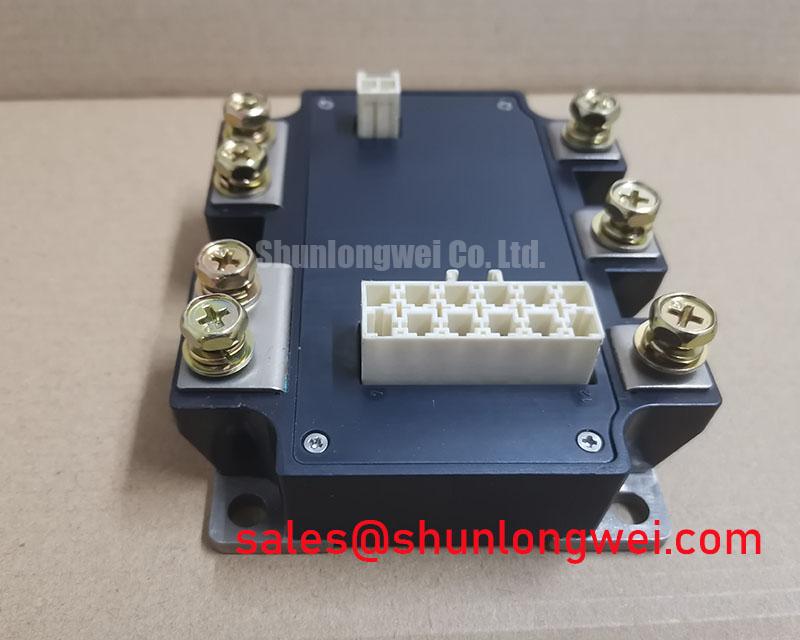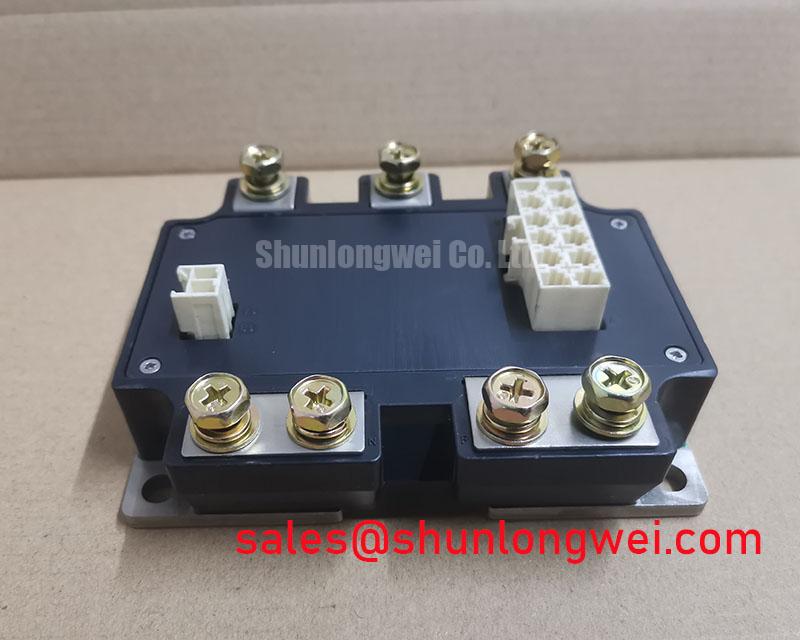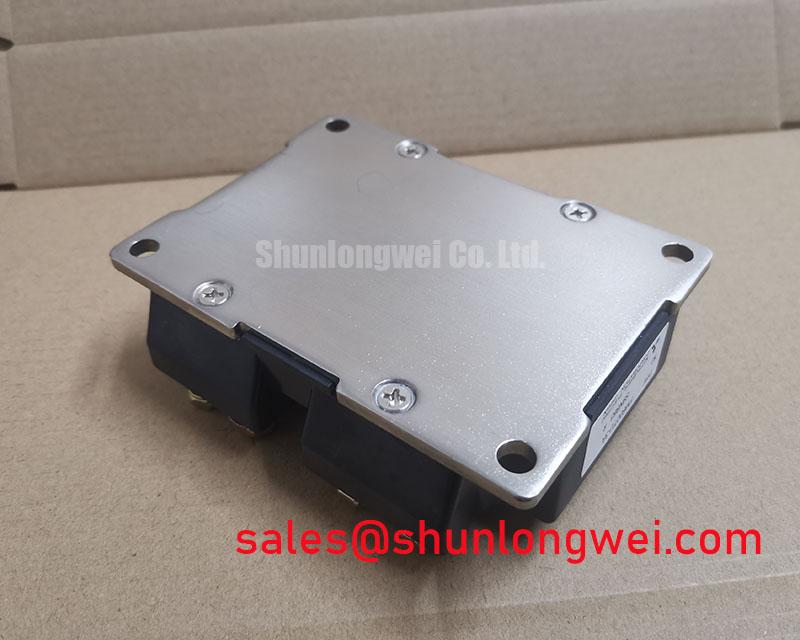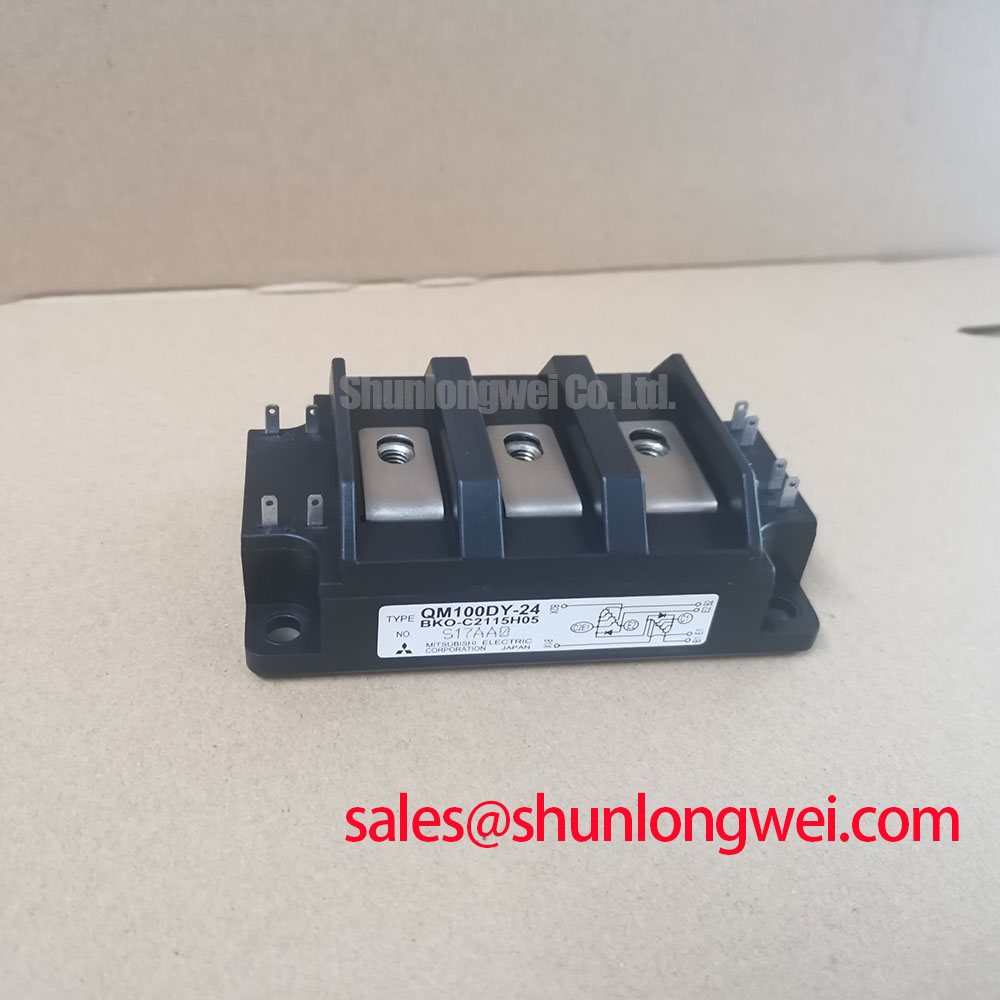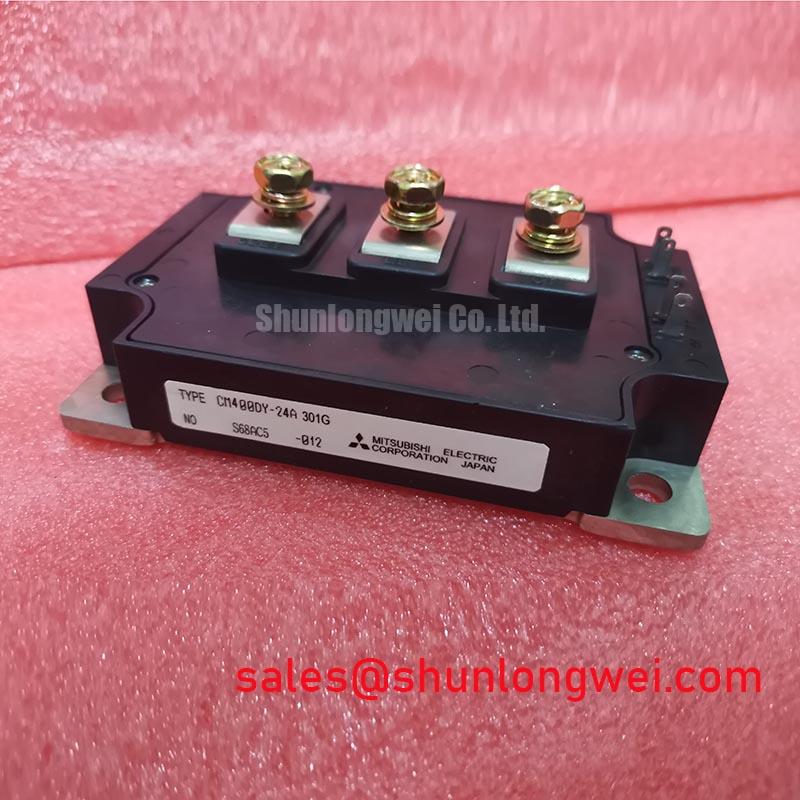Content last revised on November 14, 2025
FM600TU-3A | 1700V 600A IGBT for Reliable Power Systems
The Mitsubishi FM600TU-3A is a U-Series high-power IGBT module engineered for exceptional thermal stability and long-term reliability in demanding power conversion applications. With a robust 1700V blocking voltage and 600A current rating, this half-bridge module provides a dependable foundation for high-power inverters and drives. Its design prioritizes efficient heat dissipation, a critical factor for extending system lifetime. The module's low junction-to-case thermal resistance ensures effective heat evacuation, which is fundamental for maintaining operational stability under heavy loads.
Top Specs: 1700V | 600A | Rth(j-c) 0.042°C/W
Key Benefits: Superior thermal transfer, High electrical isolation.
Operational Contexts Demanding Thermal Endurance
The FM600TU-3A IGBT module is specified for environments where consistent performance and thermal resilience are paramount. Its robust design makes it suitable for a range of high-power applications that directly benefit from its superior heat management and high voltage rating.
- High-Power Motor Drives: In industrial applications such as large-scale pumps, fans, and conveyor systems, the module's ability to handle significant current and efficiently dissipate heat contributes to reduced system downtime and enhanced operational reliability.
- Renewable Energy Inverters: For wind and solar power conversion systems, long-term reliability is essential. The FM600TU-3A's stable thermal characteristics help ensure maximum energy harvesting and grid stability, even under fluctuating environmental conditions.
- Uninterruptible Power Supplies (UPS): In critical infrastructure like data centers and medical facilities, the module provides a reliable power switching element, ensuring seamless power delivery during utility outages. Its high isolation voltage enhances the safety and integrity of the overall UPS system.
What is the primary benefit of its low thermal resistance? It allows for smaller heatsink designs or greater operational margin, directly impacting system cost and reliability. For high-frequency industrial motor drives where thermal cycling is intense, the FM600TU-3A's low Rth(j-c) of 0.042°C/W makes it a well-suited choice for minimizing junction temperature stress.
Deployment Focus: Ensuring Uptime in Critical Systems
In the field, the reliability of a power module is often tested by its ability to withstand worst-case thermal scenarios. The engineering behind the Mitsubishi FM600TU-3A directly addresses these challenges. Consider a high-power industrial drive operating in a facility with high ambient temperatures; a module with inferior thermal transfer capabilities would risk exceeding its maximum junction temperature, leading to premature failure and costly production halts. The FM600TU-3A is designed to mitigate this risk by providing a highly efficient thermal pathway from the semiconductor die to the heatsink. This focus on thermal management is a key factor in its deployment in systems where long-term, uninterrupted service is a primary operational requirement. For more information on preventing common issues, explore our guide to IGBT Failure Analysis.
Anatomy of Thermal Performance: A Closer Look at the FM600TU-3A
The performance of a high-power IGBT module is intrinsically linked to its thermal design. The FM600TU-3A incorporates key features aimed at maximizing heat dissipation and ensuring electrical stability.
Low Thermal Resistance Path
A critical parameter in any power module is the junction-to-case thermal resistance (Rth(j-c)). This value represents the efficiency of heat transfer from the active silicon chip to the module's baseplate. The FM600TU-3A specifies a low Rth(j-c) of 0.042°C/W for the IGBT and 0.083°C/W for the free-wheeling diode. This low resistance acts like a wide, unobstructed channel for heat, preventing excessive temperature buildup at the junction. This is analogous to a water cooling system's pipe diameter; a wider pipe (lower resistance) allows for a higher flow rate (more heat transfer), keeping the system cooler and operating more reliably. To fully leverage this, understanding why thermal resistance matters is crucial for effective heatsink design.
Robust Electrical Isolation
The module features an AC isolation voltage rating (Viso) of 4000Vrms. This high isolation capability is vital for ensuring safety and preventing electrical arcing between the high-voltage terminals and the grounded heatsink. It provides a significant safety margin in systems with high DC bus voltages, contributing to the overall robustness and regulatory compliance of the end equipment.
Quantifying Reliability: Core Specifications
The following parameters from the datasheet are central to evaluating the FM600TU-3A for your power stage design. These figures provide the basis for electrical and thermal simulations.
| Parameter | Value |
|---|---|
| Collector-Emitter Voltage (VCES) | 1700V |
| Collector Current (IC) @ Tc=80°C | 600A |
| Collector-Emitter Saturation Voltage (VCE(sat)) @ IC=600A | 2.3V (Typ.) |
| Thermal Resistance, Junction to Case (Rth(j-c)) - IGBT | 0.042 °C/W |
| Thermal Resistance, Junction to Case (Rth(j-c)) - Diode | 0.083 °C/W |
| Isolation Voltage (Viso) | 4000Vrms |
For a complete list of specifications and performance curves, please refer to the official product documentation.
Technical Inquiries for System Integration
How does the Rth(j-c) of the FM600TU-3A impact heatsink selection?
The low thermal resistance of 0.042°C/W (IGBT) means that for a given amount of power dissipation, the temperature difference between the silicon junction and the module case will be smaller. This allows engineers to either use a more compact, lower-cost heatsink to achieve a target junction temperature or operate the device at higher power levels with a given heatsink, providing greater design flexibility.
What is the significance of the 1700V VCES rating for this module?
A 1700V rating provides a substantial safety margin for applications running on high DC bus voltages, particularly those derived from 690V AC mains. This higher breakdown voltage enhances system reliability by providing greater tolerance against voltage overshoots and transients that can occur during high-speed switching operations, a common challenge in inverter design.
Can the FM600TU-3A be paralleled for higher current applications, and what are the thermal considerations?
Yes, IGBT modules like the FM600TU-3A can be paralleled to achieve higher current output. However, careful design is required. It is crucial to ensure symmetrical electrical layout to balance current sharing and to implement a thermal design that guarantees uniform temperature across all paralleled modules. Mismatched temperatures can lead to current imbalance, potentially overloading one module.
What gate drive voltage is recommended for the FM600TU-3A?
The datasheet specifies a recommended gate-emitter voltage (VGE) of +15V for turn-on and typically recommends a negative voltage (e.g., -10V to -15V) for turn-off. Using a negative turn-off voltage is critical in high-power applications to prevent parasitic turn-on caused by the Miller effect, thereby improving noise immunity and preventing shoot-through events.
Data-Informed Evaluation for Your Power Stage
When selecting a power module, comparing key specifications against the application's unique demands is crucial. The FM600TU-3A's 1700V rating offers a distinct advantage in systems where voltage margins are a primary concern. For systems operating on standard 400V/480V lines where a 1200V rating is sufficient, a device like the CM600DX-24T may be considered. The table below presents a factual comparison to aid in your technical evaluation.
| Parameter | FM600TU-3A | A 1200V Alternative Example |
|---|---|---|
| Collector-Emitter Voltage (VCES) | 1700V | 1200V |
| Collector-Emitter Saturation Voltage (VCE(sat)) (Typ.) | 2.3V @ 600A | 1.75V @ 600A |
| Primary Application Focus | High voltage margin systems (e.g., 690V AC line) | Standard voltage systems (e.g., 400/480V AC line) |
This data is presented to support your design analysis. The choice depends on the specific voltage, efficiency, and safety margin requirements of your project.
Strategic Implications of Robust Thermal Design
As industrial and renewable energy systems push for higher power density and extended operational lifetimes, the role of component-level thermal management becomes increasingly strategic. A module with superior thermal performance, such as the Mitsubishi FM600TU-3A, allows designers to build more compact and reliable systems. This translates into a lower total cost of ownership (TCO) by reducing the need for oversized cooling systems and minimizing the risk of thermally-induced failures. Investing in components with a solid thermal foundation is a forward-looking strategy that aligns with industry trends toward more efficient, durable, and power-dense electronic systems. This approach is fundamental to creating next-generation power conversion platforms that can meet future energy demands. A comprehensive understanding of power electronics is key, as detailed in our in-depth analysis of IGBT modules.
By specifying components with inherently strong thermal and electrical characteristics, engineering teams can build power systems that are not only powerful but also fundamentally more reliable. The Mitsubishi FM600TU-3A embodies this design philosophy, offering a robust building block for the next wave of high-performance power electronics.

